Having owned several larger cruising boats, I thought a simple, lightweight, and easily trailerable boat would be great way to downsize. For years, I’ve admired the designs of Sam Devlin, and I even owned one of his cruisers. When I stumbled upon the Pelicano 18 design, the classic look, along with Sam’s lyrical Design Notes, sucked me right in.
It’s remarkable that he created such graceful lines using only six flat plywood panels. The Pelicano might be a perfect starter boat, but for me the attraction was its economy and simplicity: it can be stored on a trailer without marina fees, haulouts, and storage. There is no pesky bottom growth, no through-hull fittings, no oily bilges, no systems to troubleshoot, and nothing to winterize.
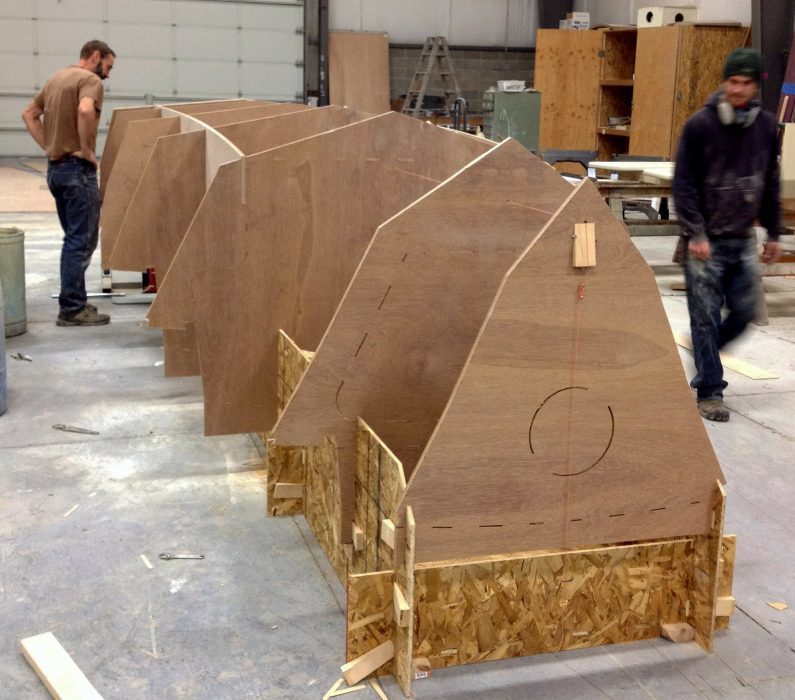 Devlin Designing Boat Builders
Devlin Designing Boat BuildersIn the Devlin shop, the first Pelicano 20 takes shape on a form of interlocking pieces of oriented strand board. The plywood bulkheads and frames appear solid here, but openings, interior shapes, and deck and cabin-roof contours have been partially cut by the CNC router.
The Pelicano hull shape was inspired by Mexican pangas—long narrow skiffs that are easily driven with modest outboard power and typically operated off the beach. With this in mind, Devlin designed the Pelicano to handle frequent beachings and to rest upright on her body with minimal tilt after a fallen tide. The stem-to-stern hardwood keel covered with a full-length stainless-steel shoe can take the wear. This boat is made to hit the beach.
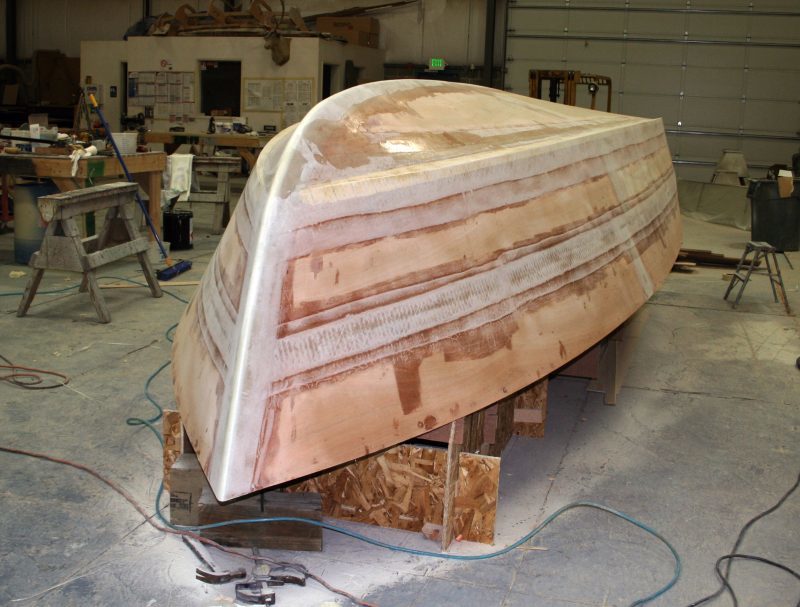 Devlin Designing Boat Builders
Devlin Designing Boat BuildersThe sharp entry and deep-V sections forward soften the ride in choppy water.
I found online pictures of beautiful Pelicanos built by the owners, but the boats were often multi-year projects. We wanted a boat sooner than that, and we were well aware of the reputation of Devlin’s factory-built boats for quality and attention to detail. We talked Devlin into building us a stretched version of his Pelicano 18 to gain a bit more space in the cockpit, and the result, our 20′ 2″ ADELINE, was the first Pelicano 20. The design has now been added to Devlin’s line of plans and kits.
For the do-it-yourselfer, Devlin’s stitch-and-glue method offers builders a straightforward way to construct a beautiful and seaworthy craft with basic tools. The building starts with a series of frames that form the mold for the exterior panels, and these frames become an integral part of the finished boat. You can start from scratch cutting panels to shape using the offsets provided in the set of plans, or you can order a kit with the panels CNC-cut to size.
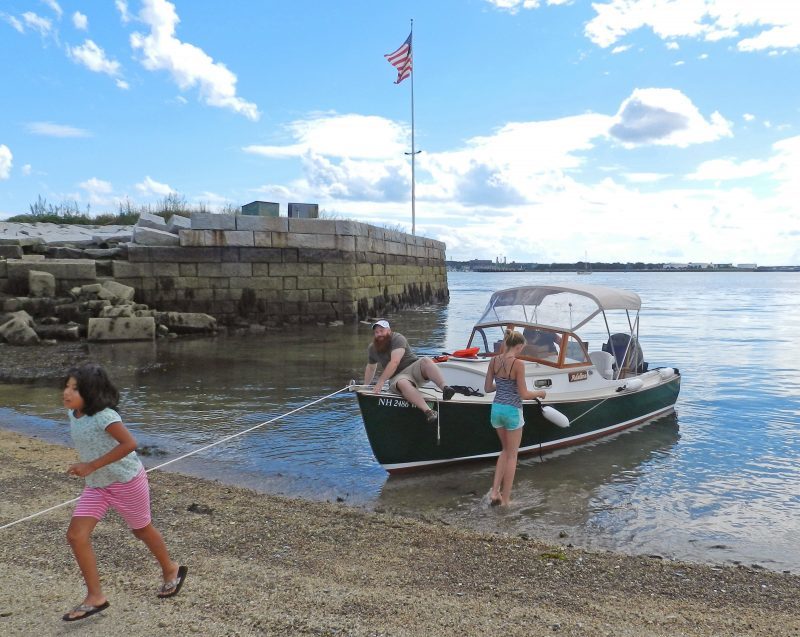 Henry Clews
Henry ClewsWith its keel protected by a full-length stainless-steel shoe, the Pelicano is meant to come ashore on gravelly beaches.
Our Devlin-built Pelicano 20 is a real jewel. We were impressed when we first took the boat out for sea trials. Even with that big 115-hp Mercury outboard hanging on the stern, she floated perfectly on her lines, and performance turned out to be nothing short of breathtaking. We saw top speeds of over 35 mph, but more importantly, she cruised 20 mph quietly and effortlessly at half-throttle. Handling was excellent, with just the right amount of banking on the turns to keep you centered in your seat.
A sharp entry helps the Pelicano 20 handle choppy water with aplomb. The pronounced, full-length keel also cuts the water before it hits the hull, thus minimizing pounding. The ride might not be as cushy as it is with a deep-V hull, but the trade-off here is efficiency. The aft portion of the hull transitions to a very shallow V section that provides a large, nearly flat surface aft. The shape allows the boat to get on plane more easily and with minimal bow rise, while contributing to the boat’s stability.
The Pelicano 20 can cruise effortlessly at 20 knots with a 70-hp motor, while a similar-sized deep-V would require much more power and use more fuel. With a V-hull, the water is pushed out to the sides so there’s less lift. Many small deep-V hulls plow along with their bow high in the air and don’t plane below 15 knots. The Pelicano’s superior performance can be attributed to its light weight, a benefit of its stitch-and-glue construction.
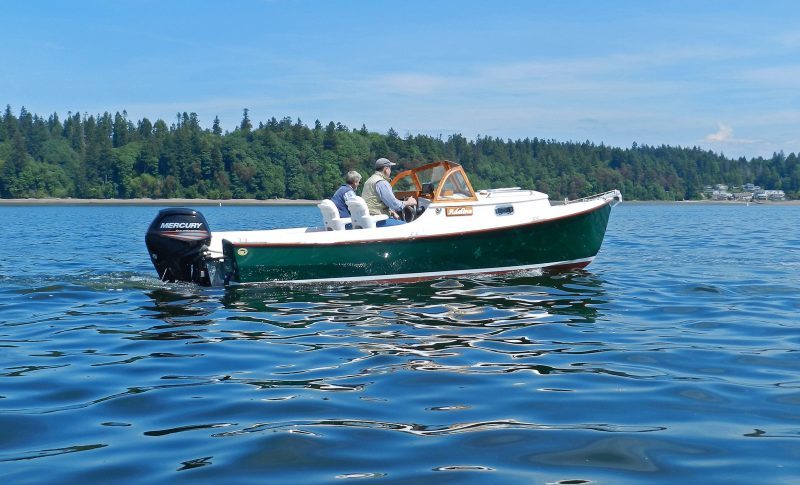 Jim Perkins/Devlin Designing Boat Builders
Jim Perkins/Devlin Designing Boat BuildersThe Pelicano 20 can get on plane with very little bow rise so there is no awkward speed where visibility forward is obscured.
Unlike many small planing boats, the Pelicano 20 has very little bow rise as she planes, which means you can run the boat very comfortably at any speed. ADELINE is fitted with hydraulic trim tabs, which are not really necessary for this boat but have been handy for leveling the hull when two heavy people sit on one side. They are also useful for lowering the bow for a better ride when pushing into a heavy chop.
One of the best features of this boat is easy trailering. To save on shipping costs, I towed the boat back home to New Hampshire from Washington State, crossing the country with our modest, mid-sized SUV. The Pelicano 20 didn’t require a heavy-duty pickup truck for towing. Total height on the trailer, when hitched to our car, is 7′4″, just right for storing the boat in our garage. This can be dropped to less than 7′ by lowering the trailer tongue, should that be necessary to get through a lower garage door. Our trailer also has a folding tongue that shortens its length by 30″ and brings it even with the bow of the boat.
Since then, ADELINE has put in many road miles. I have launched and retrieved her single-handed on a number of occasions; her light weight makes it easy to recover the boat with a simple hand winch. I estimate that with the 115-hp outboard, she weighs in at just under 2,000 lbs. Total towing weight, including trailer, is about 2,500 lbs.
While Devlin offers the Pelicano 18 and 23 in three versions—the bassboat, a shrimper with a hardtop over the helm, and an open fisherman with a center console—the Pelicano 20 is currently offered only in a bassboat configuration with a roomy cabin and a windshield for the helm. There’s room below for a small portable toilet and a V-berth big enough for two 6′-tall occupants.
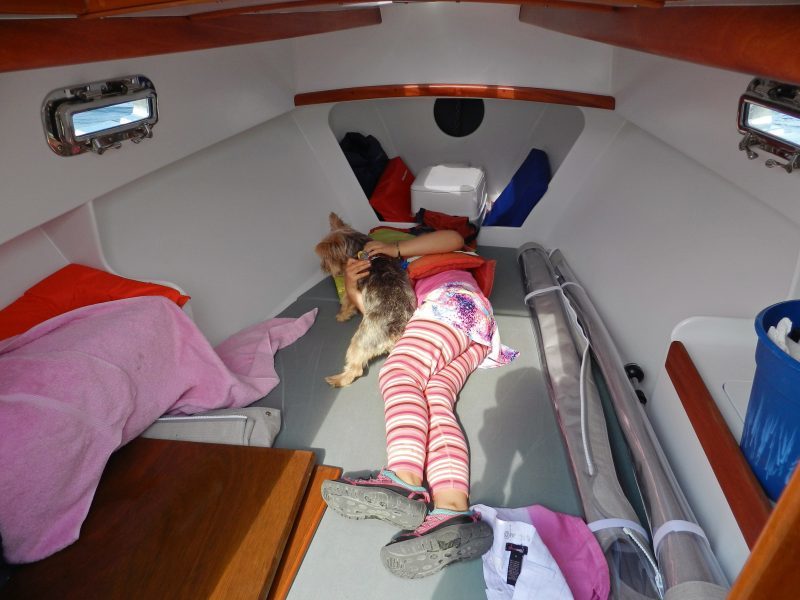 Henry Clews
Henry ClewsThe cabin can comfortably accommodate two adults for nights at anchor.
Although several builders of the Pelicano 18 have added a shelf with a small sink and a fresh-water pump, we have not done so on ADELINE. Our boat has storage shelves over the bunks on either side and small storage lockers beneath. Up forward there’s an open storage area where we store life jackets, miscellaneous gear, and the portable toilet when it is not in use. Ahead of this open locker there’s an access port to the anchor-rode locker. The cabin has two stainless-steel, opening ports with screens, and a large overhead hatch that provides good light and ventilation.
Access to the forward cabin is through a sailboat-style companionway. The top is hinged, and folds against the windshield where there’s a brass hook to secure it. To close the entrance, two mahogany plywood panels are dropped in vertically, and the hatch folds down on top of these; it can be locked with a hasp.
The side decks are wide, allowing easy access forward. All the deck surfaces have a nonskid coating. Devlin has artfully worked the nonskid treatment around every cleat and deck fixture. At the bow there’s an anchor roller and a capped stainless hawsepipe to guide the anchor rode down into the locker below.
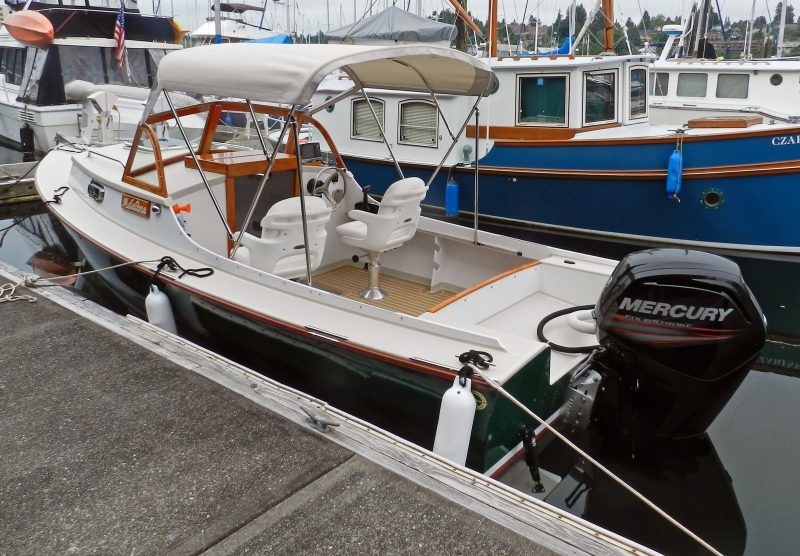 Henry Clews
Henry ClewsThe cockpit has room for two folding deck chairs, making comfortable seating for four while underway.
We added a folding canvas top with a large clear panel above the windshield, which allows full vision forward while standing at the helm, plus side panels and a back canvas that provide full enclosure of the helm and cockpit. We have two adjustable helm chairs and a pair of rod-holders along each side of the cockpit—simple notches cut in the plywood frames.
The cockpit is not self-draining; the floor is not high enough above the waterline to make this viable. Instead, water on the cockpit floor drains aft into a small well where it is then removed by an automatic electric bilge pump. When the boat is on the trailer, we open the transom drain plug. With the canvas cover in place, no water collects in the boat; rain is shed off the sides and aft into the self-draining outboard splash well.
In the center of the cockpit floor, just aft of the companionway, is a watertight hatch that provides access to the bilge and battery compartment. The 18-gallon fuel tank is tucked aft under the outboard splash well and is translucent so you can see the fuel level. There’s also an electronic fuel gauge. We figure we have a range of about 80 miles at fast cruise and quite a bit more if we run at a more leisurely pace. Over our first summer, ADELINE averaged 5.4 mpg.
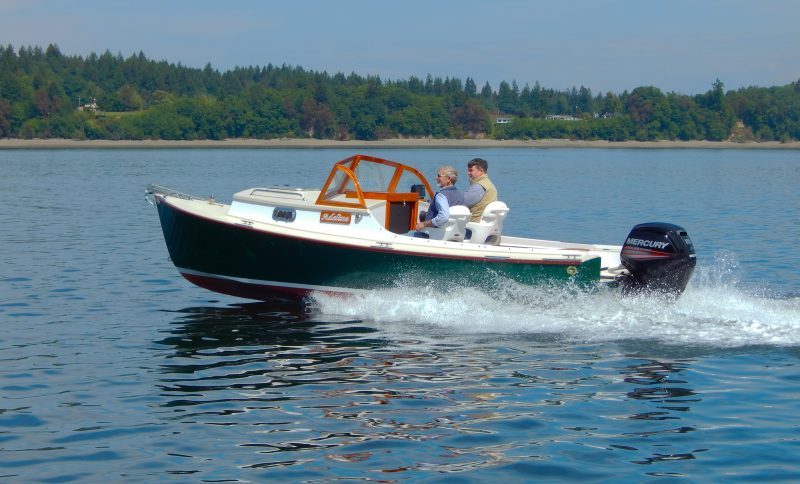 Jim Perkins/Devlin Designing Boat Builders
Jim Perkins/Devlin Designing Boat BuildersPowered by a 115-hp outboard, the Pelicano 20 should achieve speeds of 40 mph. Designer and builder Sam Devlin is at the helm.
Being able to take this boat overland has opened up many possibilities. We have access to many beautiful inland lakes that used to be off-limits to our larger boat. We can trailer the boat from New Hampshire to Ontario’s beautiful Georgian Bay. By boat, a trip like this would require the better part of an entire summer to complete. We have very much enjoyed the versatility and portability of this little cruiser. Everywhere we go with this boat, on land and on sea, we get stares, comments, and thumbs-up; a lot of pride comes with such an uncommon and beautiful boat.![]()
Henry Clews and his wife recently moved from New Hampshire and now make their home in Jensen Beach, Florida. They write extensively about their travels by boat on their blog, Sno’ Dog Log.
Pelicano 20 Particulars
[table]
LOA/20′2″
Beam/7′5″
Draft (engine up)/10″
Power/115 hp outboard (maximum)
Displacement/2300 lbs
[/table]

Study plans for the Pelicano 20 are available from Devlin Designing Boat Builders. Full construction plans ($325) and a CNC-cut kit ($6,999) will be available in mid-June 2017.
Is there a boat you’d like to know more about? Have you built one that you think other Small Boats Monthly readers would enjoy? Please email us!
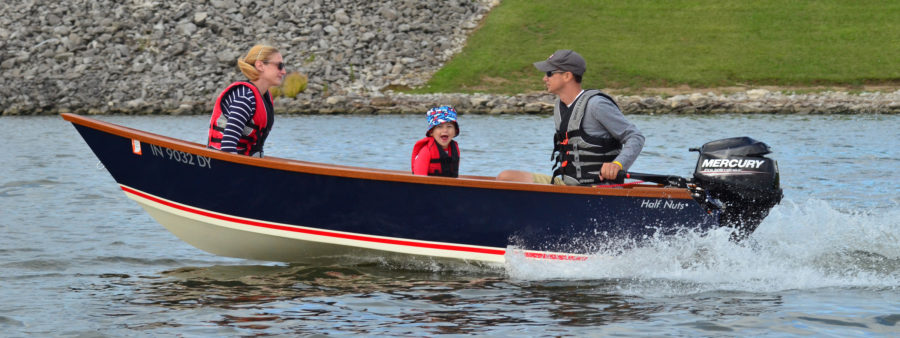
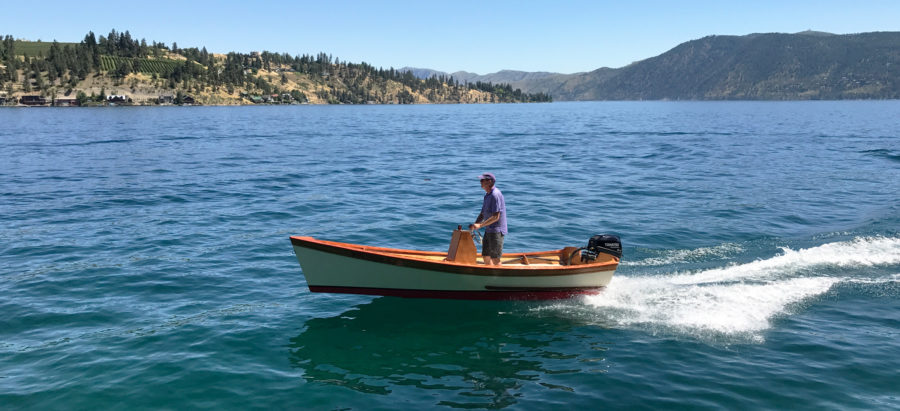
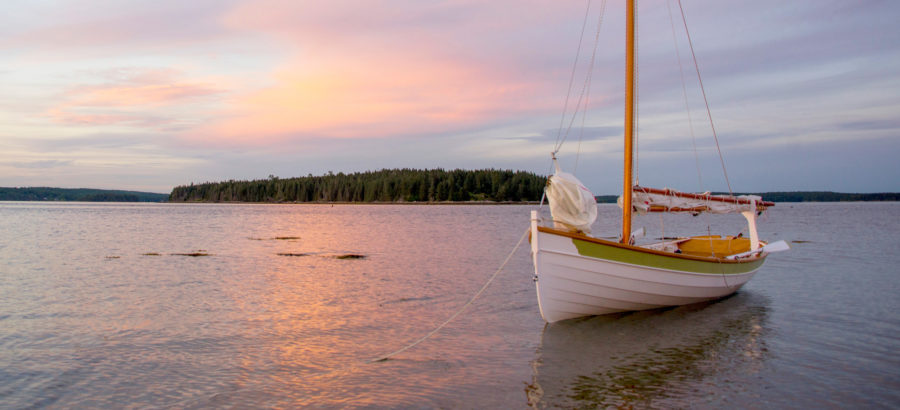
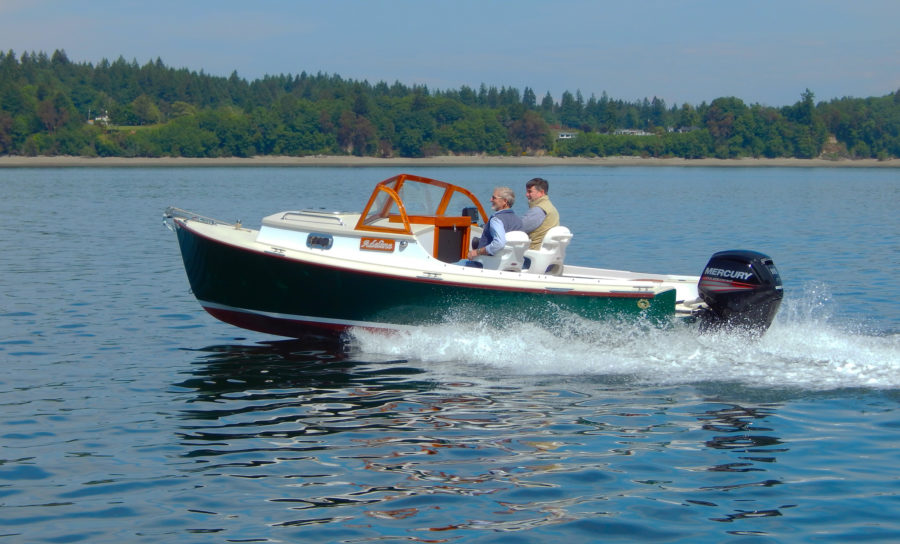
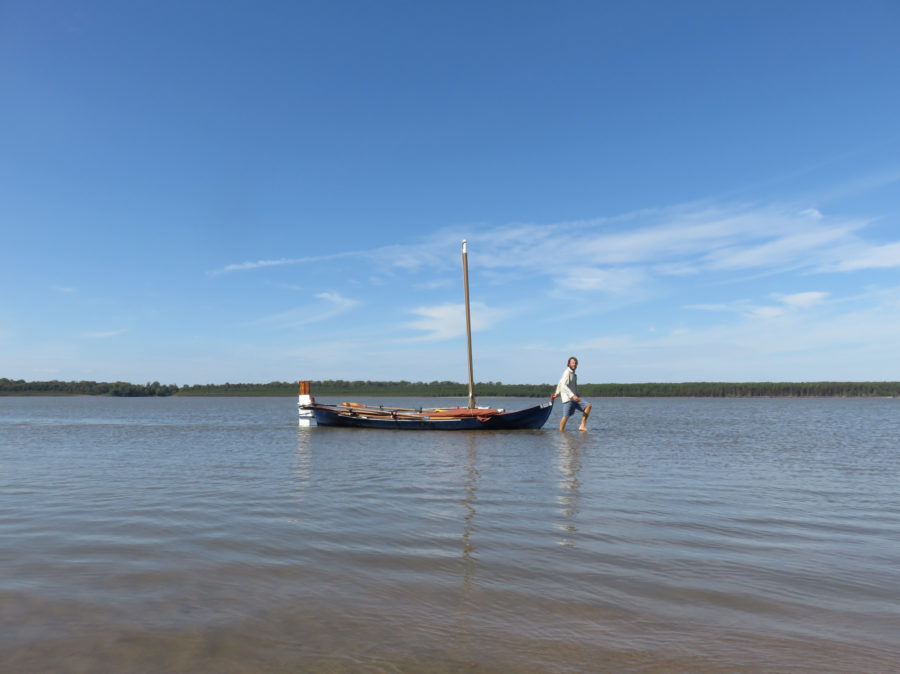
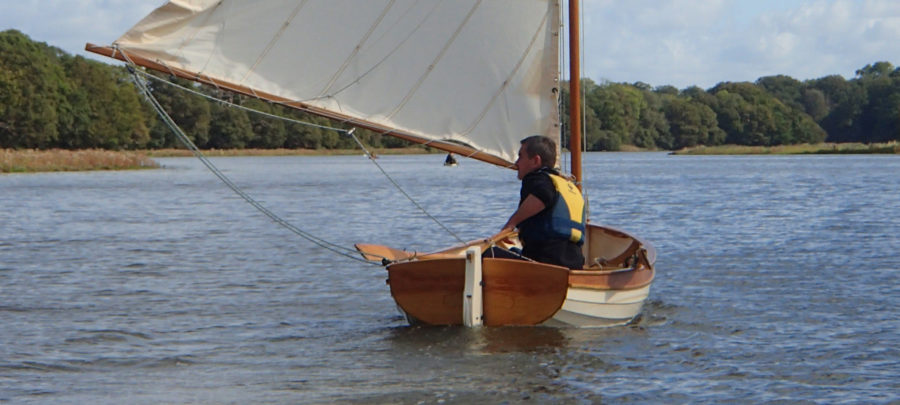
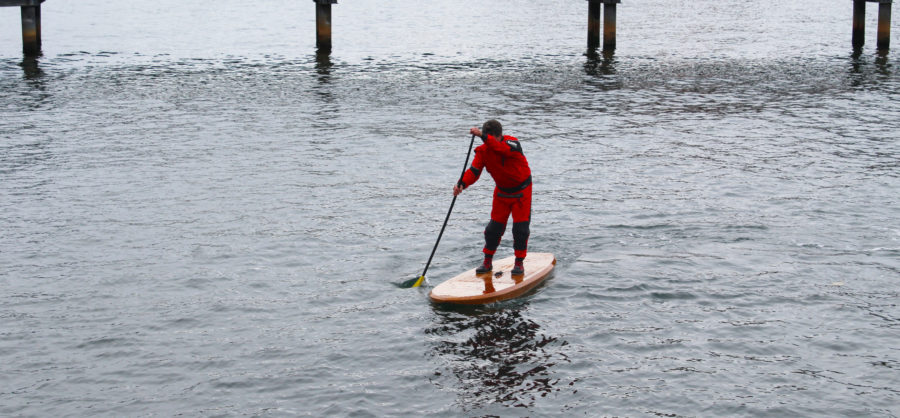

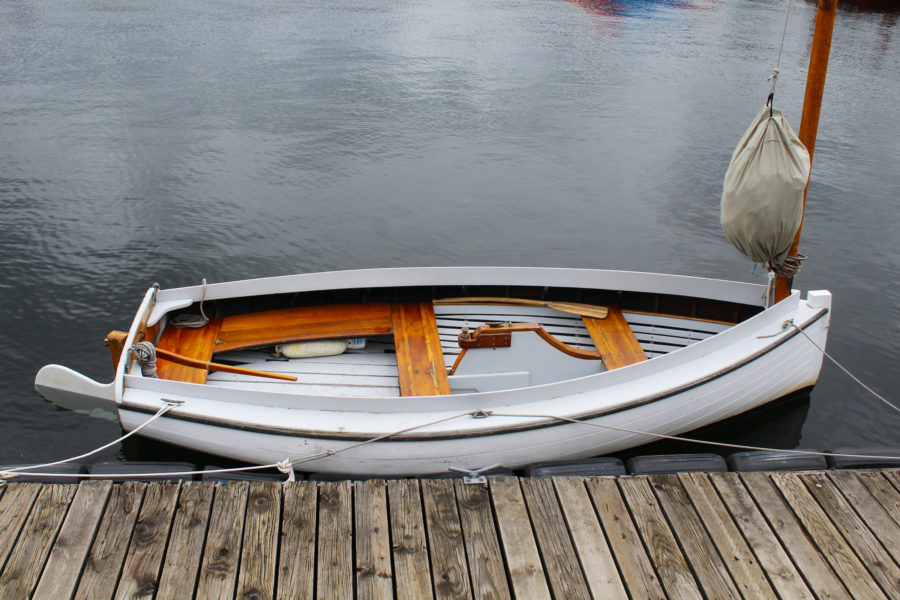
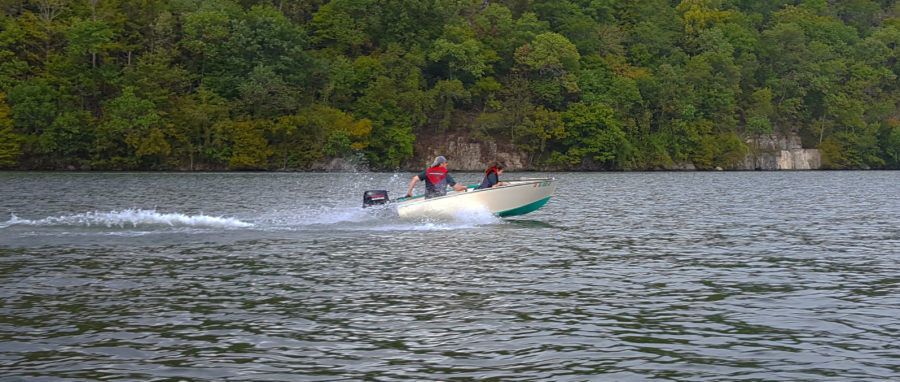
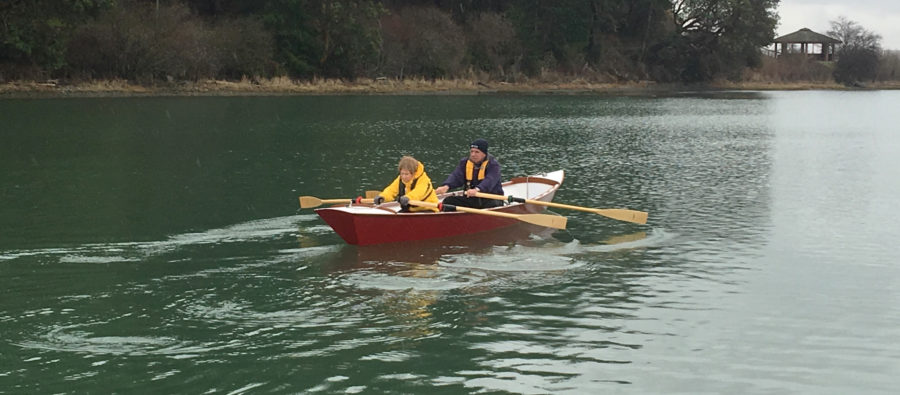
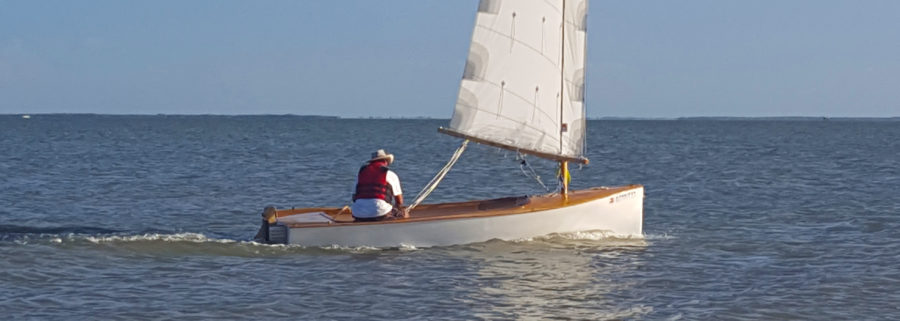
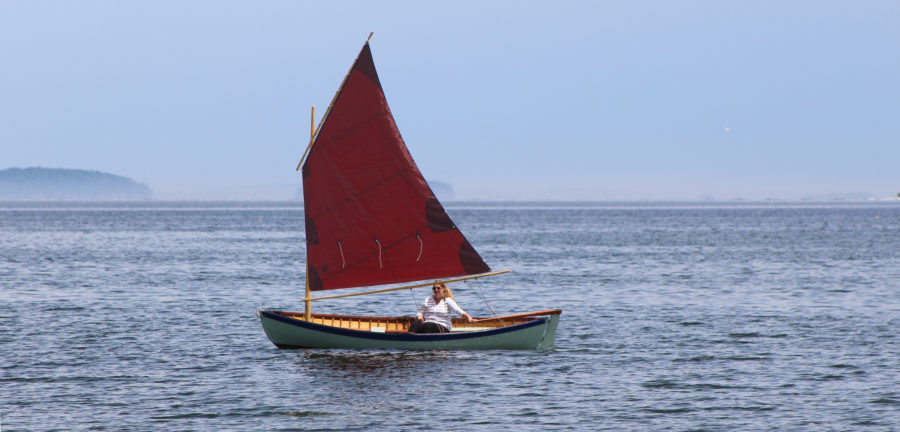
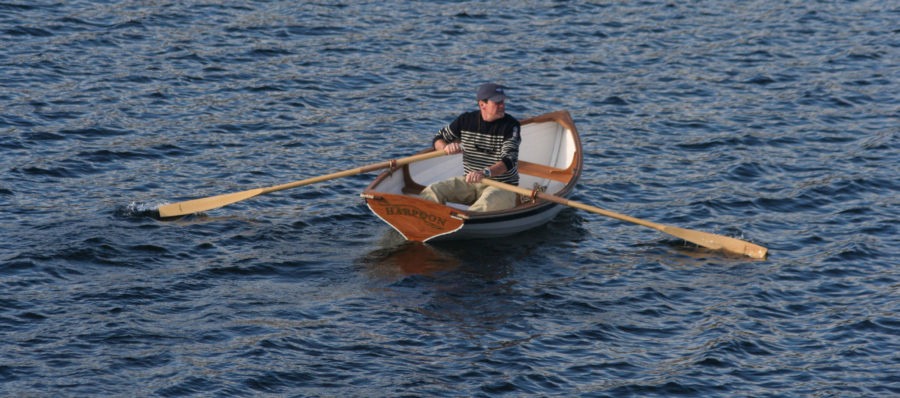
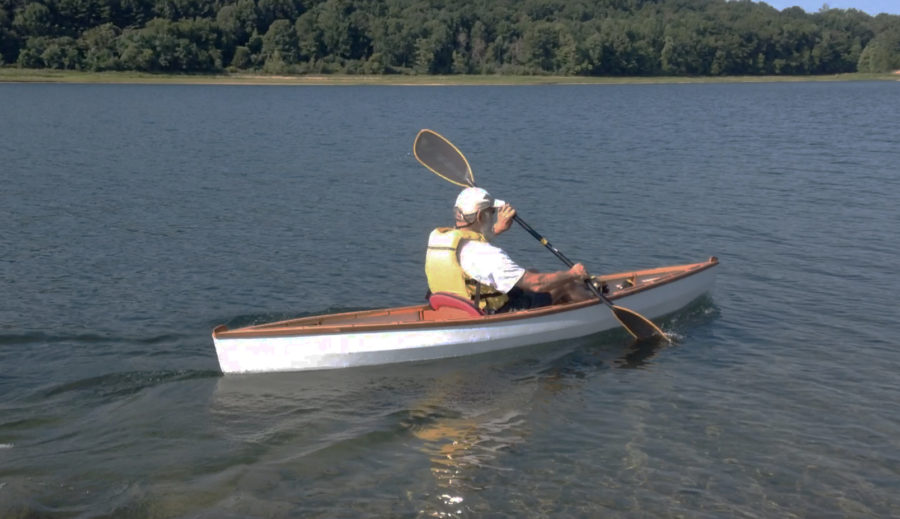
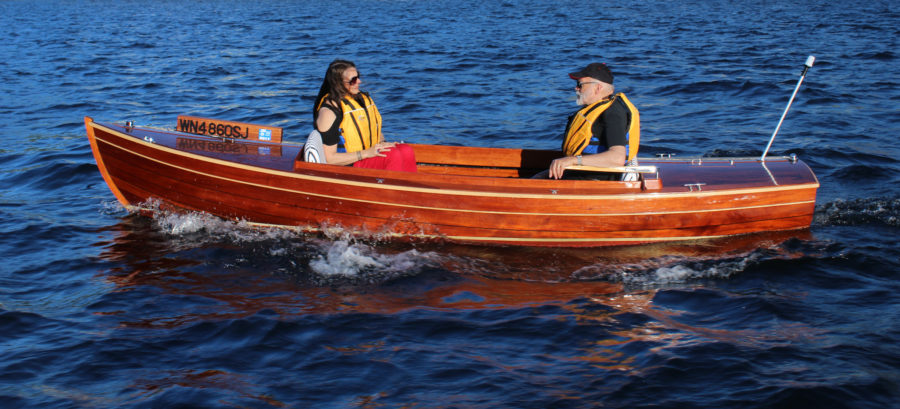
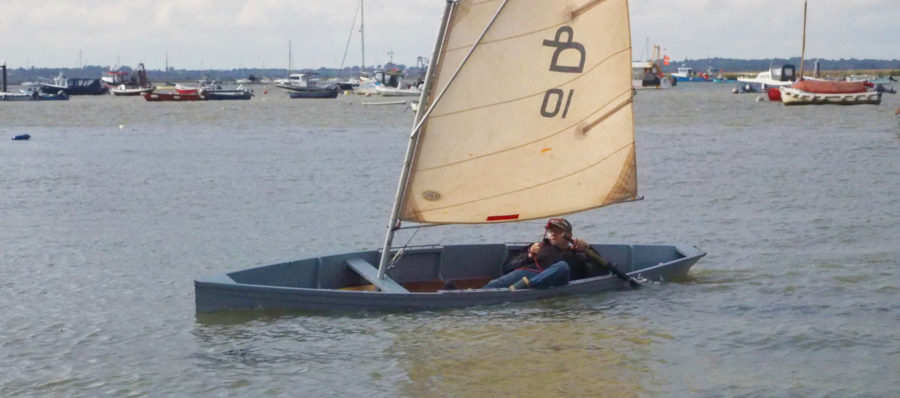
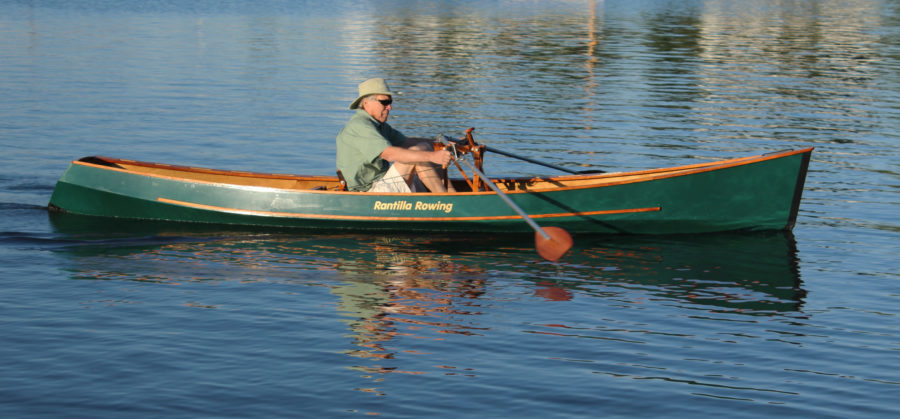
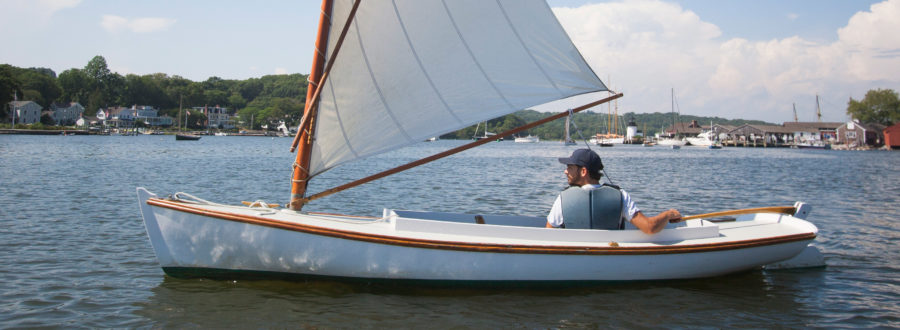
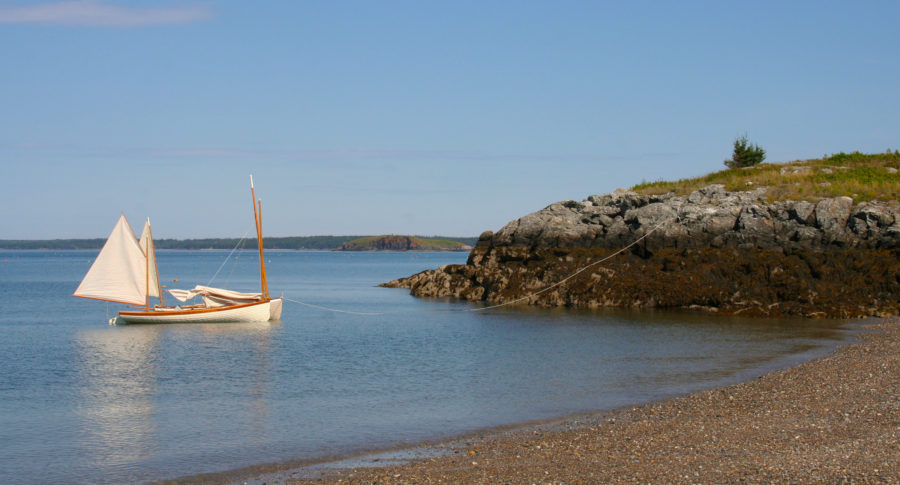
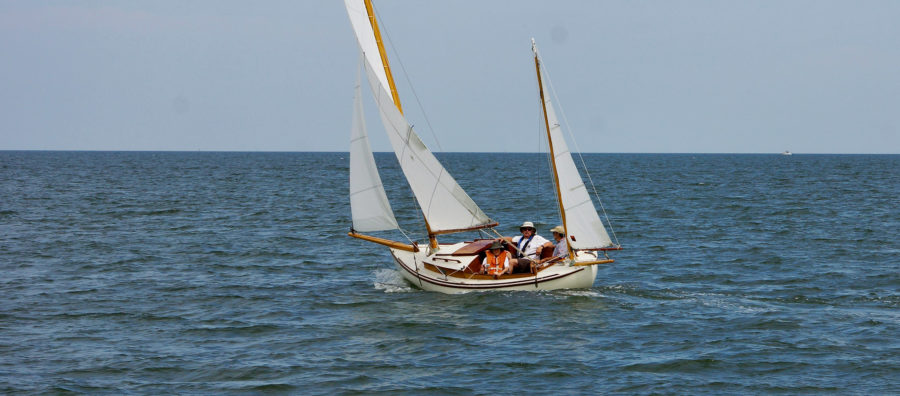
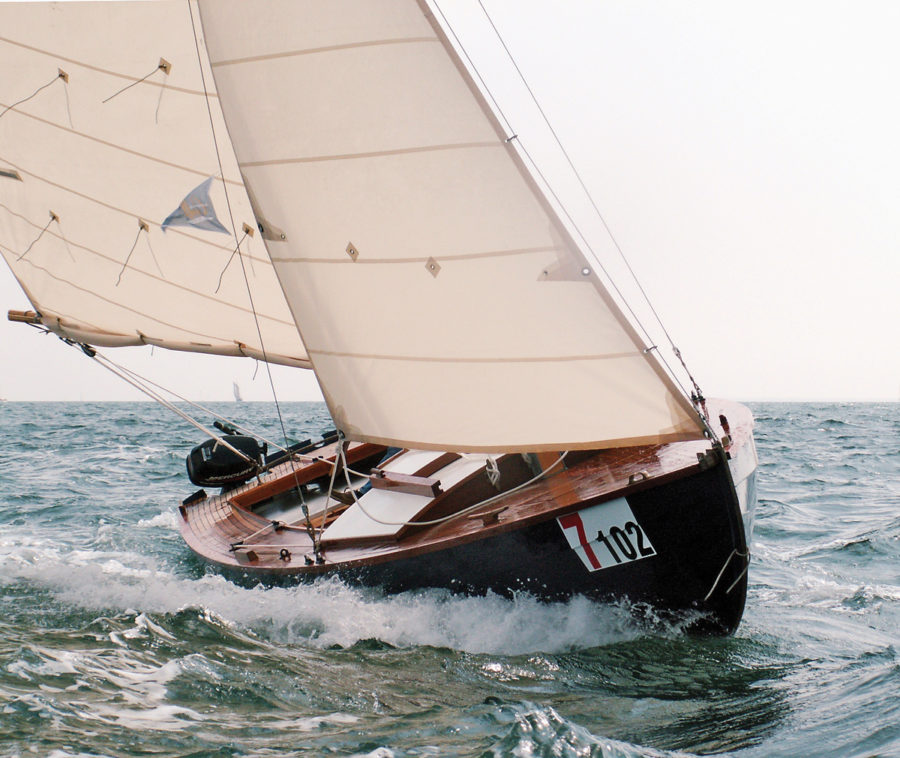
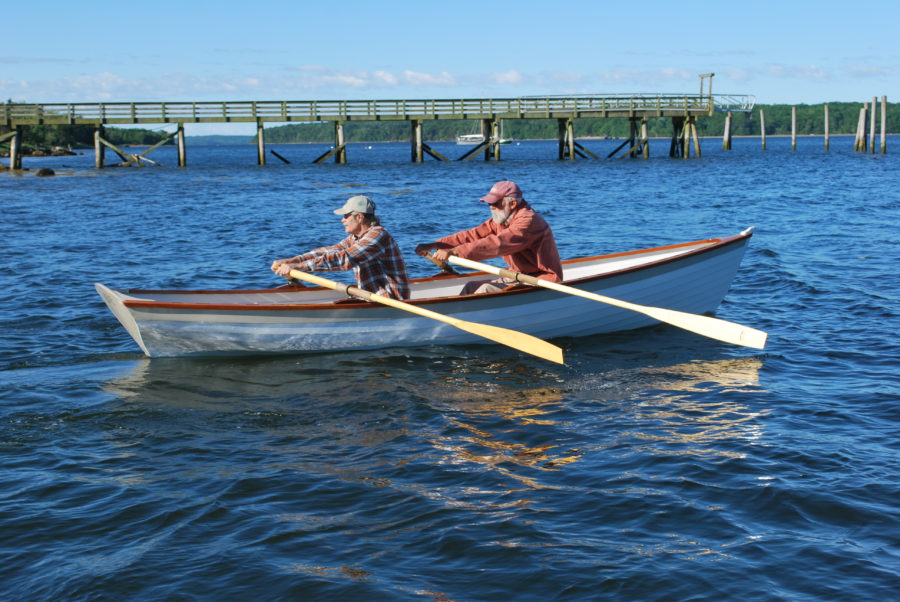
Beautiful boat. Devlin knows how to draw great lines.
It reminds me a lot of the small boats that used to inhabit the Jersey Shore before ‘glass became the normal. I mean that in a very good way, as I always thought those boats were pretty, utilitarian, and sweet riding. I miss those boats, they all went to the great boat-burning pyre in the sky long ago.
My first build was Devlin’s Polliwog, 20 years ago and I still own it. Living on Buzzards Bay in Cape Cod, Massachusetts. Love the looks of this ,it reminds me of a downsized Crosby striper. Are there any plans for this or a similar boat up to 22′ with an inboard 4 cyl. diesel about 120hp? I’m very interested so I can build that retirement boat.